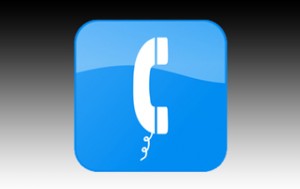The last thing anybody wants to think about when coming to a hospital is getting worse, not better, mainly due to hospital-acquired infection. Not only are hospital-acquired infections common, but they are on the rise in many states across the US.
A Hospital-acquired infection (HAI) can quickly turn into a severe emergency. In hospitals, HAIs are the most commonly occurring complication. According to the Let’s Get Healthy California Task Force, HAIs cost California upwards of 3 billion dollars each year. Additionally, around 1 in 31 hospital patients contract one or more healthcare-acquired infections every day.
What defines an Infection as “Hospital-Acquired”?
According to the United States Department of Health and Human Services (HHS), a hospital-acquired infection is an infection that occurs while a person is getting treatment for a different condition. Any health care facility may be affected by HAIs, including hospitals, ambulatory surgical centers, long-stage care facilities, and more.
When healthcare providers fail to take precautions to prevent dangerous infections in hospitals, patients can face increased risks, including HAIs.
Why and How Do HAIs Occur?
Whether an HAI occurs during routine treatment or advanced surgery, an infection acquired in a hospital can cause life-threatening injuries. The infection source will be an infectious agent like bacteria, a virus, or a protozoan. The infectious agent may enter the body through surgical site wounds, medical devices, such as catheters and IVs, and wound drainage, which removes any fluid accumulated after surgery.
HAIs can result in bloodstream infections, urinary tract infections, lung infections, staph infections, and wound infections, becoming life-threatening, especially if undetected or untreated. Other types of HAIs are tuberculosis, gastroenteritis, skin infections, infection of the reproductive organs, infection of the general nervous system, soft tissue infection, and fungal infections. Severe cases of HAIs can result is sepsis and even potentially fatal septic shock.
Surgeons, physicians, nurses, and other hospital personnel are taught how to prevent HAIs by wearing and changing gloves, washing hands, using protective barriers, and ensuring non-clean surfaces are sanitized or avoided. When these infections are transmitted to a patient by a healthcare worker or piece of equipment, it is considered a hospital-acquired infection. When the principles and practices mentioned above are neglected, the patient is put at risk and often suffers needlessly, as most HAIs are preventable.
Hospital-Acquired Infections: How Do They Happen?
Several factors can lead to hospital-related infections, and it is imperative to consider their modes of transmission. Your attorney will be able to determine whether you have grounds to file a lawsuit against a hospital, clinic, or healthcare worker based on the mode of transmission.
Below are three primary categories for modes of transmission of HAIs.
- Direct transmission occurs whenone person transmits an infection directly to another by touching them. Direct transmission can happen when the healthcare professional helps an elderly patient sit up or get to the bathroom. Another example is when a staff member changes a newborn’s diaper in a hospital setting.
- Indirect transmission occurs when a health care worker handles an object that infects a patient. Indirect contact transmission can occur, for example, if a healthcare worker fails to properly sterilize equipment after working with one patient and then moving on to their next patient.
- Vehicle transmission occurs when a patient becomes ill due to contaminated food, water, or equipment.
What to do if you believe you had an HAI?
A hospital-acquired infection is an infection that is clinically diagnosed but is not related to the original medical condition or issue that led the patient to the hospital. Most hospital-acquired infections appear within 48 hours of your admission. However, some HUIs appear even after you have already been discharged from the hospital.
It is important to keep track of all related hospital records, paperwork, related bills, and documents.
Compensation may be available to offset the economic costs and other expenses related to treating infections that stemmed from either negligence or malpractice of hospital staff. Proper documentation will help establish that you have suffered from an HAI and calculate compensation.
Every year, millions of people become ill from hospital-acquired infections. However, not all patients can bring a lawsuit against a hospital or healthcare provider. Generally, a hospital infection must have had a significant impact on the patient’s health, have been incorrectly diagnosed, or inadequately treated for a meaningful lawsuit to be filed.
Note: Hospitals are well equipped with their own team of attorneys, so it is paramount if you believe your infection was hospital-acquired to contact an experienced medical malpractice attorney as soon as possible.
A San Bernardino attorney specializing in medical malpractice and negligence can evaluate your claim, identify whether you have a case, and help you file your lawsuit successfully. Please, do not hesitate to contact our offices for a consultation with our experienced legal team. Call our injury lawyers at SANFORD A. KASSEL, A Professional Law Corporation, at 909.884.6451.



